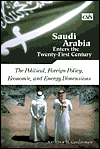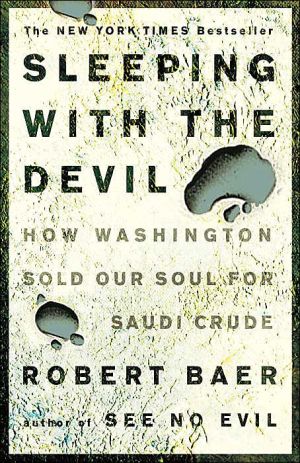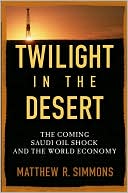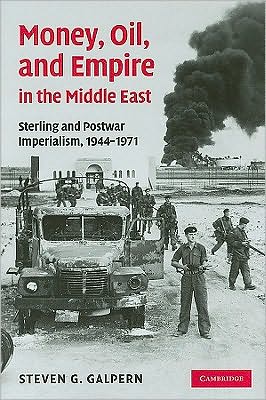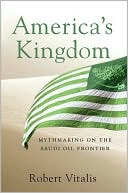Saudi Arabia Enters the Twenty-First Century: The Political, Foreign Policy, Economic, and Energy Dimensions, Vol. 2
As the world carefully monitors tensions in the Middle East, Saudi Arabia increasingly finds itself the center of political scrutiny in both its internal and external relations. With its military capabilities largely dependent upon the United States and other Western forces, Saudi Arabia cannot concentrate on internal change at the expense of external security. This study looks beyond a narrow definition of political stability to examine the implications of Saudi Arabia's changes in external...
Search in google:
Cordesman analyses the major political and economic changes that confront Saudi Arabia and assesses their impact on regional stability. Foreign Affairs Given its heft, this work will likely become a reference to be consulted, not a book to be read. As such, it is a splendid resource, providing the comprehensive coverage suggested by its subtitle. A chapter on Saudi foreign relations includes summary descriptions of Saudi ties to its neighboring states, the United States, and several others. Another describes the Saudi political system. There is even a chapter offering a detailed narrative account of the Islamist opposition to the Saudi state. Most of this big book, however, treats the basic social and economic institutions and issues that define Saudi Arabia today, ranging from education to privatization to the petroleum sector and beyond. An awesome number of charts and tables usefully compare Saudi standings with other countries. This text is more than a handbook. In it, Cordesman presents to the reader a Saudi government with many problems and a mixed record that is nevertheless more stable and more effective than present-day critics believe.
IllustrationsPrefaceAcknowledgmentsCh. 1Introduction1Oil and Saudi Progress4Historical Origins13The Political and Foreign Policy Challenges of the Twenty-First Century19The Coming Domestic Challenges20The Economic and Demographic Challenges of the Twenty-First Century24The Security Challenges of the Twenty-First Century35Ch. 2Foreign Relations and External Security41Iran and Iraq: The Primary Threats44The Southern Gulf and Yemen63Relations with Israel and Policy Toward the Arab-Israeli Conflict86Relations with Egypt98Relations with Syria99Relations with Jordan100Relations with the Greater Arab World101Relations with the United States and the West103Saudi Foreign Policy at the Beginning of the Twenty-First Century120Ch. 3Politics and Internal Stability131The Monarchy, the Majlis al-Shura, and the Royal Family132Political Reform and Opposition156Ch. 4Opposition and Islamic Extremism161Working Within the System: The Role of Saudi "Modernizers"162The Character and Impact of Saudi Puritanism163Education as a Self-Inflicted Wound175Making Women Part of the Problem, Rather than Part of the Solution177Religious Extremism and Active Political Opposition179Sunni versus Shi'ite206Militant Saudi Extremists: Osama bin Laden and al-Qaeda210Militant Saudi Extremists: Other Threats213Opposition, Extremism, Terrorism, and Saudi Counterterrorism214Looking Toward the Future221Ch. 5Economic, Demographic, and Social Challenges229The Dynamics of Recent Demographic Change229The Future Pace of Demographic Change235Demographics, Per Capita Income, and Consumption239Redefining "Oil Wealth" in Macroeconomic and Human Terms247Demographic Pressures on Saudi Society and the Saudi Labor Force250The "Youth Explosion," Foreign Labor, and Saudisation261Saudi Economic Development versus Saudi Education280Saudi Entitlements, Infrastructure, and Diversification Problems288The Challenge of Subsidies291Pressure on Infrastructure294The Interaction Between Demographics, Water, and Agriculture299Meeting the Kingdom's Economic, Demographic, and Social Challenges306Ch. 6Building True Wealth versus Overdependence on Petroleum and the State317The Saudi Economy at the Edge of the Twenty-First Century318Putting Current Saudi Efforts in Perspective: Plans and Goals versus Actions and Achievements343Looking at the Future: The Seventh Development Plan351The Challenge of Dependence on Petroleum Exports and Revenues356"Oil Bust" and "Oil Boom": The Interaction Between OPEC and Market Forces376Oil Wealth and Demographics: Understanding the Future Limits383The Challenge of Reducing the Government Sector390Managing and Restructuring the Saudi Budget390Foreign and Domestic State Debt410Privatization and the Private Sector: Intentions verus Implementation414Private and Foreign Investment and Banking Reform435Broader Goals for Economic and Social Reform448Ch. 7Shaping the Future of the Saudi Petroleum Sector463The Critical Global Important of Saudi Oil Reserves465Saudi Oil Production467Export Facilities and Distribution487Refining489Petrochemicals494Natural Gas498Saudi Gas Production502Saudi Energy Strategy in the Twenty-First Century511Changes in Saudi Energy Strategy and Investment Policies525Living with Uncertainty, and Doing So with as Little Ideology, and as Much Pragmatism, as Possible540Ch. 8Saudi Arabia at the Start of the Twenty-First Century: Key Conclusions551Political Change552Population, Youth, and a Vision of the Future553The Need for a New Social Contract554The West and the Pace of Saudi Modernization558Bibliography561Index571
\ Foreign AffairsGiven its heft, this work will likely become a reference to be consulted, not a book to be read. As such, it is a splendid resource, providing the comprehensive coverage suggested by its subtitle. A chapter on Saudi foreign relations includes summary descriptions of Saudi ties to its neighboring states, the United States, and several others. Another describes the Saudi political system. There is even a chapter offering a detailed narrative account of the Islamist opposition to the Saudi state. Most of this big book, however, treats the basic social and economic institutions and issues that define Saudi Arabia today, ranging from education to privatization to the petroleum sector and beyond. An awesome number of charts and tables usefully compare Saudi standings with other countries. This text is more than a handbook. In it, Cordesman presents to the reader a Saudi government with many problems and a mixed record that is nevertheless more stable and more effective than present-day critics believe.\ \
